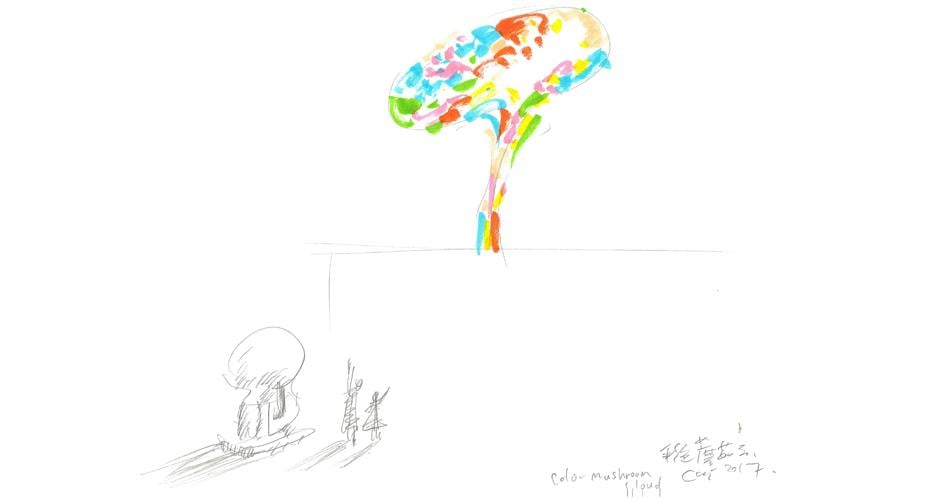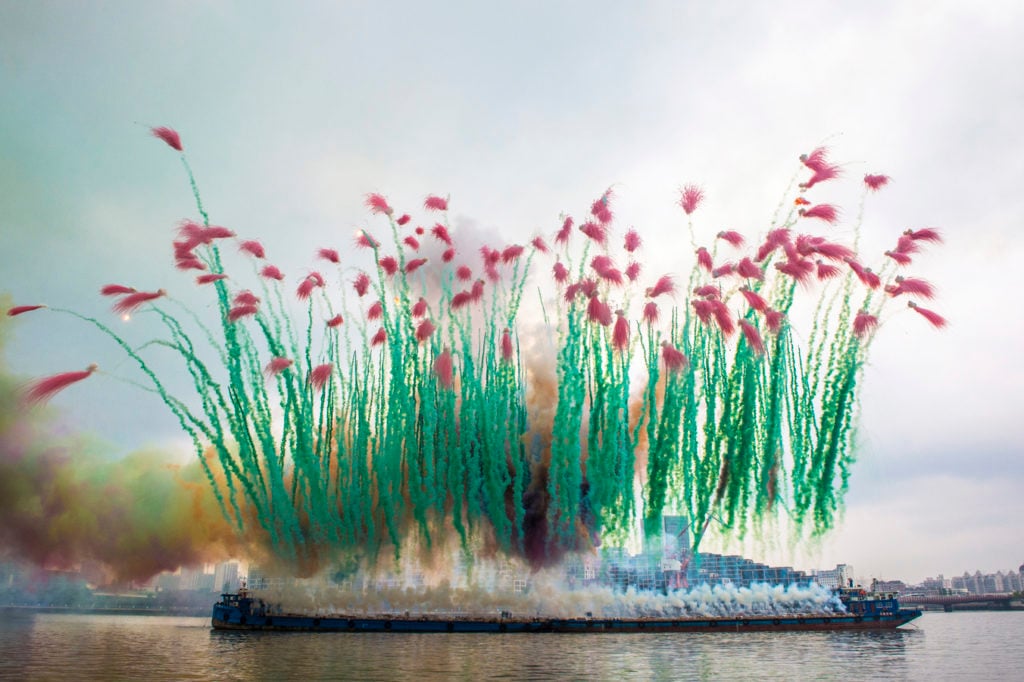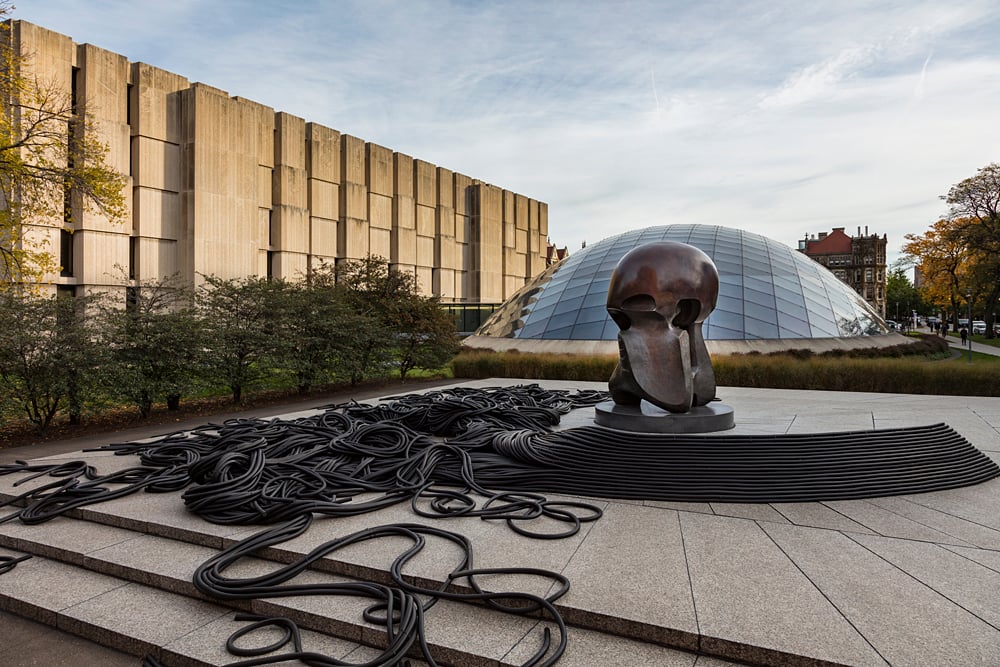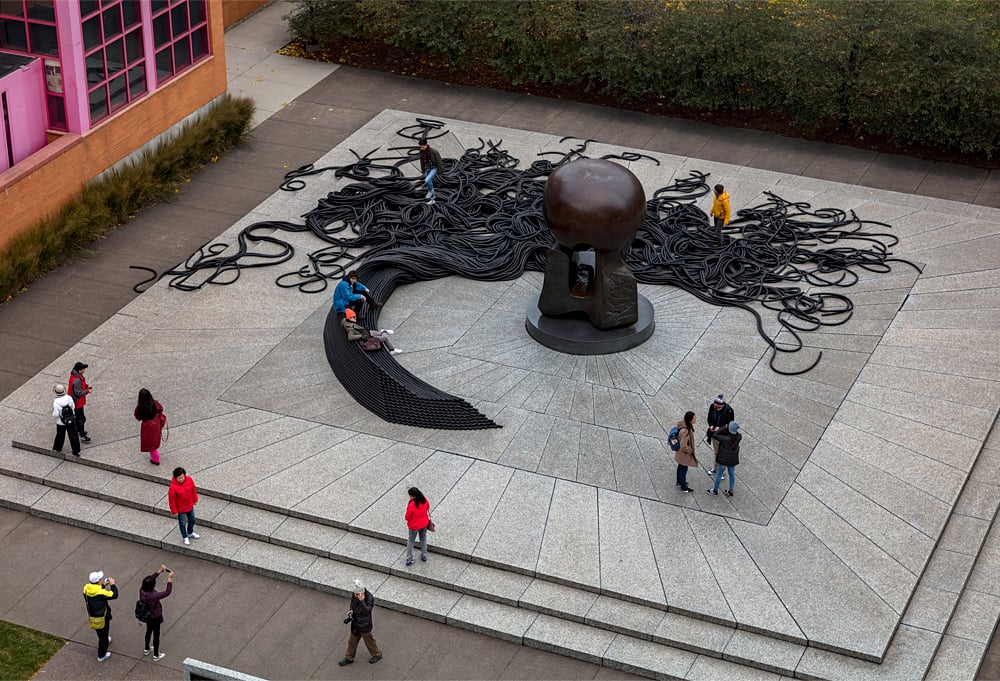Art & Exhibitions
Cai Guo-Qiang Will Detonate a Massive Mushroom Cloud Over Chicago to Mark the 75th Anniversary of the First Nuclear Reaction
The University of Chicago is organizing the explosive performance.

The University of Chicago is organizing the explosive performance.

Sarah Cascone

On December 2, 1942, at 3:25 p.m., the world ushered in the Atomic Age when the Chicago-based scientist Enrico Fermi and his Manhattan Project team initiated the first-ever human-made, self-sustaining nuclear chain reaction. Next month, to mark the 75th anniversary of that momentous occasion, Chinese artist Cai Guo-Qiang will stage one of his explosive performance pieces on the site of the reactor, known as Chicago Pile-1.
A 246-foot-high multi-colored mushroom cloud will explode above the crowd, hanging in the air for only a minute before fading away.

Cai Guo Qiang, “Remembrance,” chapter two of Elegy, an explosion event for the opening of “Cai Guo-Qiang: The Ninth Wave,” realized on the riverfront of the Power Station of Art, August 8, 2014. Courtesy of Cai Studio/Netflix/photographer Lin Yi.
The University of Chicago, which is organizing the project, chose Cai because it felt his work “dramatizes the creative and destructive forces of nuclear fission,” the university’s curator of public art Laura Steward said in statement.
“In the 1990s, I used black gunpowder to create mushroom clouds, humankind’s most iconic visual symbol for the 20th century,” Cai said. “Today, the color mushroom cloud symbolizes the paradoxical nature of employing nuclear energy: Who is it for?”

Ogrydziak Prillinger Architects, Nuclear Threshold (2017 and Henry Moore, Nuclear Energy (1967). Courtesy of Ogrydziak Prillinger Architects. Photo © Richard Barnes.
The date of the installation also marks the 50th anniversary of the installation of Henry Moore’s Nuclear Energy, a sculpture on the site that commemorates the scientific breakthrough.
But Cai and Moore aren’t the only artists to create work inspired by Chicago’s role in the nuclear age. In September, as part of the Chicago Architecture Biennial, UChicago Arts and California’s Ogrydziak Prillinger Architects unveiled Nuclear Threshold, a temporary architectural installation that responds to the Moore work. Based on the computational modeling of unstable processes used by the Manhattan Project scientists, the tangle of 75-foot-long black rubber cords will remain on view through January 7.

Ogrydziak Prillinger Architects, Nuclear Threshold (2017 and Henry Moore, Nuclear Energy (1967). Courtesy of Ogrydziak Prillinger Architects. Photo © Richard Barnes.
The two-day celebrations of the reaction’s 75th anniversary, titled “Reactions: New Perspectives on Our Nuclear Legacy,” will also include the premiere of Augusta Read Thomas’s new musical composition Plea for Peace on December 1, and the final two events in the semester-long “Arts and the Nuclear Age” lecture series, including a conversation between Cai and art history professor Wu Hung on December 1. The explosion will follow the next day.
So keep your eyes on the sky—and maybe secure some earplugs in advance.